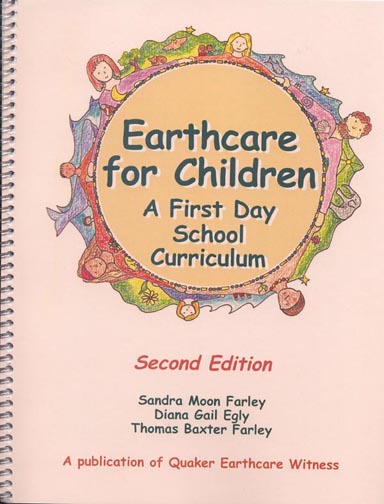Earthcare for Children,

a First Day School Curriculum
Second Edition
By: Sandra Moon Farley, Diana Gail Egly, and Thomas Baxter Farley
Published by Quaker Earthcare Witness [formerly FCUN] Spring, 2007
ISBN-10 1-881083-12-8, ISBN-13 978-1-881083-12-2, spiral bound, 8.5 X 11, 110 pages, $15.00 US.

